#TheMeasure: PhotoBite Gets Hands-On with the New Flagship Galaxy S8 Smartphone from Samsung
PhotoBite’s Patrick Wollner attended Samsung’s event for their new flagship smartphone, the Galaxy S8, in London today and captured first impressions at the hands-on area following the launch
After a rollercoaster of events over the past twelve months, Samsung introduced their new flagship smartphone, the Galaxy S8. Following the success of last year’s Galaxy S7, the larger Note 7 had been released in summer of 2016, only to be recalled twice due to battery issues and the risk of fire. In their painstaking efforts to regain consumer confidence, Samsung launched the Galaxy S8 simultaneously in London and New York as their first major device of 2017.
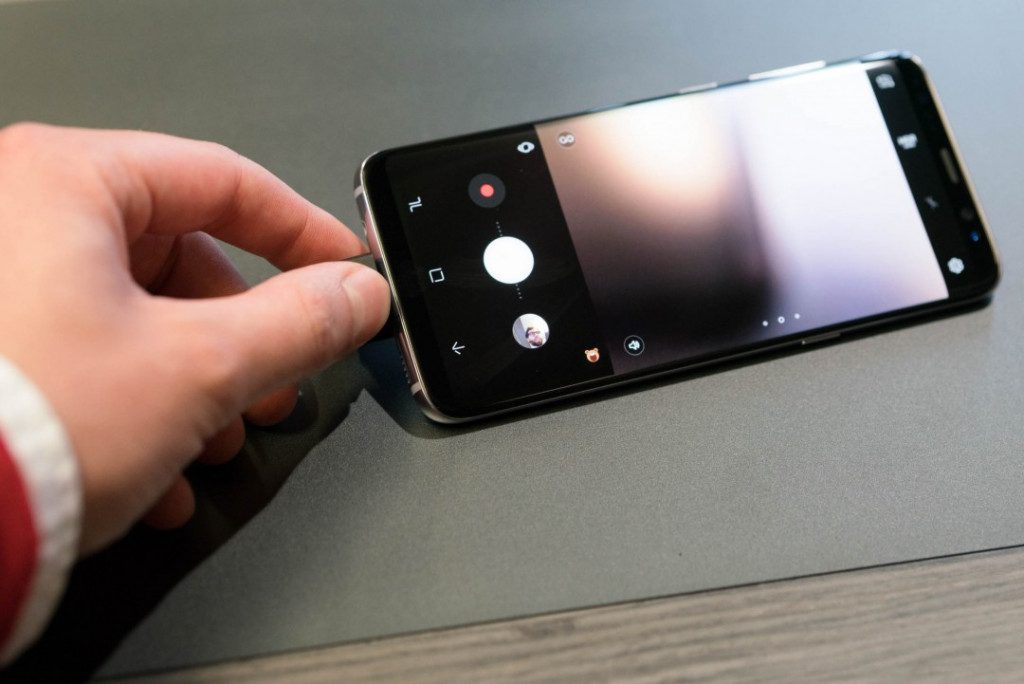
The new phone has grand ambitions to open a new chapter in mobile phone design. Its large screen with rounded corners and curved edges offers a large display in a comparably small body. Samsung calls this the “Infinity Display”, providing a unique aspect ratio: 18.5 : 9.
The new phone has grand ambitions to open a new chapter in mobile phone design. Its large screen with rounded corners and curved edges offers a large display in a comparably small body Leading up to today’s release, the Galaxy S7 continued to be a success, not only for its overall package offer, but particularly due to Samsung’s own Super AMOLED display and 12 Megapixel Dual Pixel [allowing on-chip phase detection] back-facing camera with 1.4μm sized pixels, paired with optical image stabilisation and f1.7 glass.
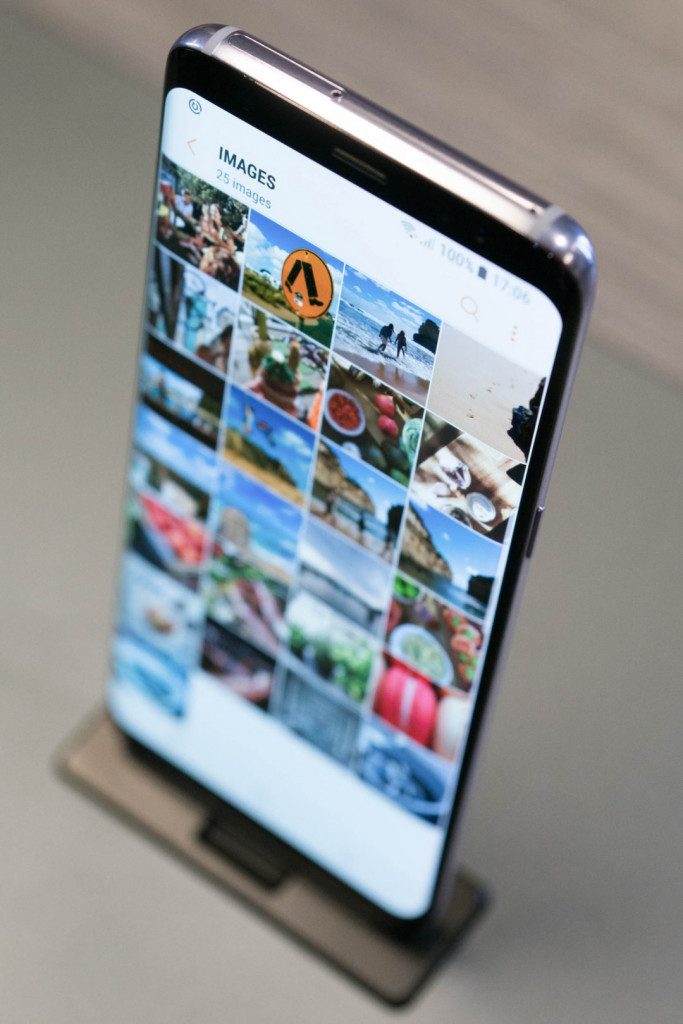
Due to high demand, the devices were shipped with either Samsung’s own ISOCELL S5K2L1 or Sony’s IMX260 sensors, both ranging at the top-end of the market. Recent developments in the mobile sensor space primarily originate from competitors offering dual-sensor solutions, such as Apple with its iPhone 7 Plus or Huawei’s P10 with its varying focal lengths, or varying sensor types [monochrome and colour], respectively.
Samsung have chosen to stick with the winning main camera hardware of the Galaxy S8 predecessor and instead focused on improvements in the front-facing camera Other key innovations included Sony’s Xperia XZ which offers a new Exmor RS sensor with exceptional low-light performance and high burst speeds. Samsung chose to stick with the winning main camera hardware of the S8 predecessor and instead focused on improvements in the front-facing camera.
In addition to a new processor, the Galaxy S8 offers, at least on paper, the same rear-facing sensor as its forerunner: 12-megapixel with Dual Pixel and f1.7 optics. The front-facing camera was replaced with an 8-megapixel camera with equally fast f1.7 optics and a new autofocus system that replaces the static focus found in most of its competitors. Changes to the camera systems mainly relate to advancements in multi-frame image processing which enable the device to do continuous three-image bracketing followed by an automated merging and selection process.
Built-in augmented reality stickers [made popular by Snapchat] and filters [as seen on Instagram] are the other key additions to the photography features of Samsung’s new flagship device. The smartphone is available in two variants, with a 5.8 inch, or 6.2 inch Quad HD+ Super AMOLED display; each with Samsung’s own octacore 10nm CPU. An iris scanner and built-in facial recognition provide additional alternatives to the fingerprint sensor, which is now mounted on the back of the phone.
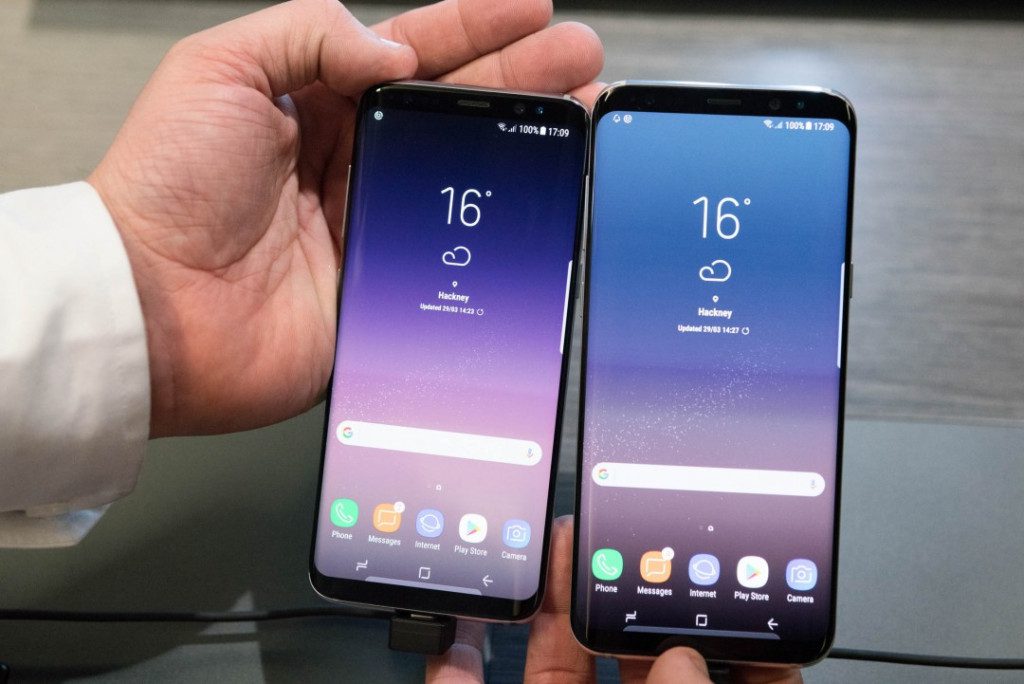
An iris scanner and built-in facial recognition provide additional alternatives to the fingerprint sensor, which is now mounted on the back of the phone.
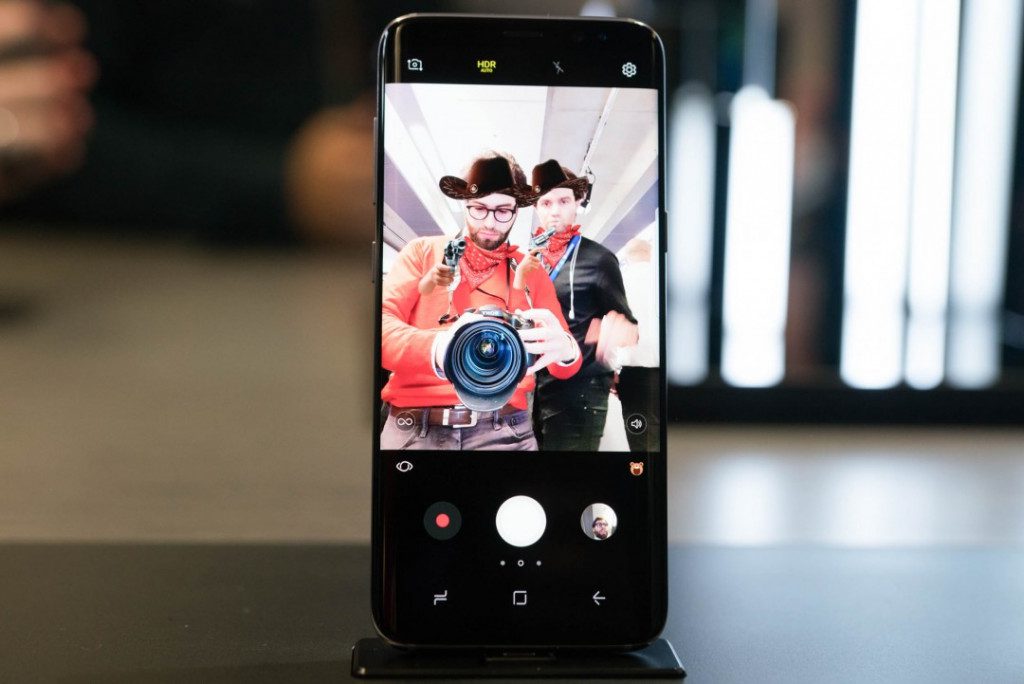
The S8 also introduces Bixby, an intelligent interface that builds on voice recognition and makes use of contextual awareness that allows the phone to interpret the situation it is in and respond accordingly.
Similarly to Apple’s Siri, it reacts to voice commands. In addition, it uses the built-in cameras to recognise people, landmarks and images, translate foreign text, read QR codes and product labels. Location awareness enables Bixby to create reminders based on where the device is and makes use of contextually relevant information in one single screen. For example, a request such as: “show me all of yesterday’s photos” simplifies navigating through the gallery and goes one step further than other phone companions were able to do in the past. However, at the April 28 launch date of the Galaxy S8, Bixby’s functionality will be limited to Korean and will be followed by ‘American English’ and other languages later on this year.
Dual 8.4 Megapixel Sensors with f2.2 fisheye lenses are stitched together to create omnidirectional images and 4K video in real time At the London and New York events, Samsung also unveiled the Gear 360, the second generation of its 360 camera. Dual 8.4 Megapixel Sensors with f2.2 fisheye lenses are stitched together to create omnidirectional images and 4K video in real time.
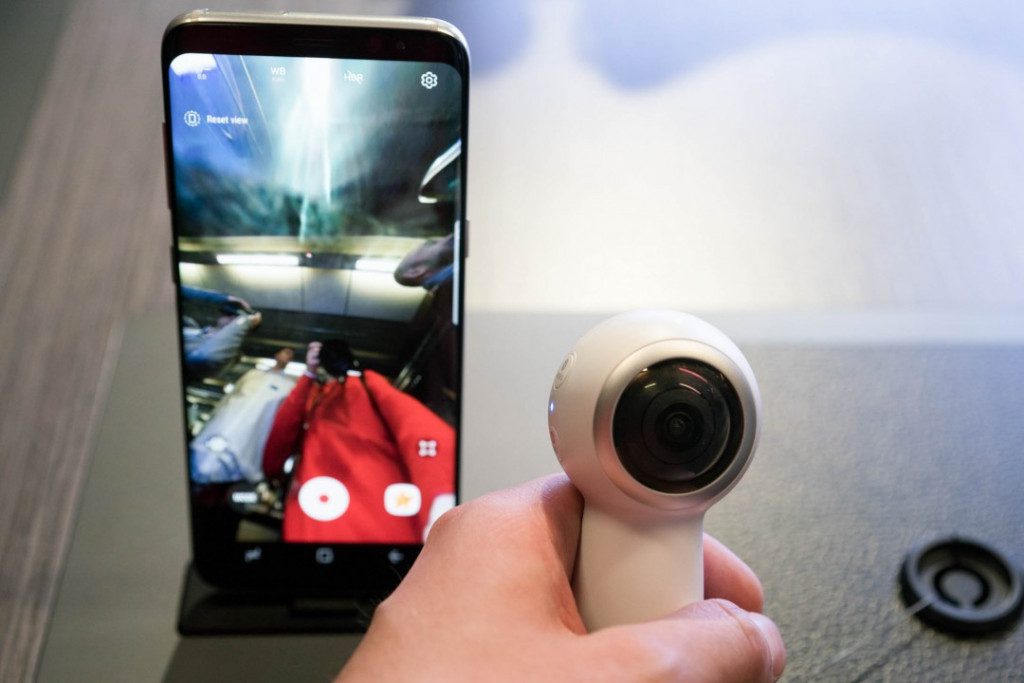
The device can store content on microSD cards and can be tethered by WiFi and Bluetooth to Samsung Galaxy as well as to recent Apple devices. The new camera will be globally launched within the next months.


